“I suppose that my subjects are, for me, idealized versions of themselves, just as toile de Jouy fabric represented a romanticized interpretation of pastoral ‘reality’ in late-18th century France.” – Tim Hailand
In my work, I allow the material to lead me — it lets me know what it wants (or does not want) to do. The subjects that I choose to photograph — whether artists, athletes, actors, musicians or amateur models — are all heroic to me in some sense. Photographing them is part of the process of creating my own personal mythology. Hence, I am more interested in what I perceive to be iconic archetypes than in individual personalities. Above all, beauty remains a driving force in my work. I have always been drawn to that which I find beautiful and try to manifest this in the work.
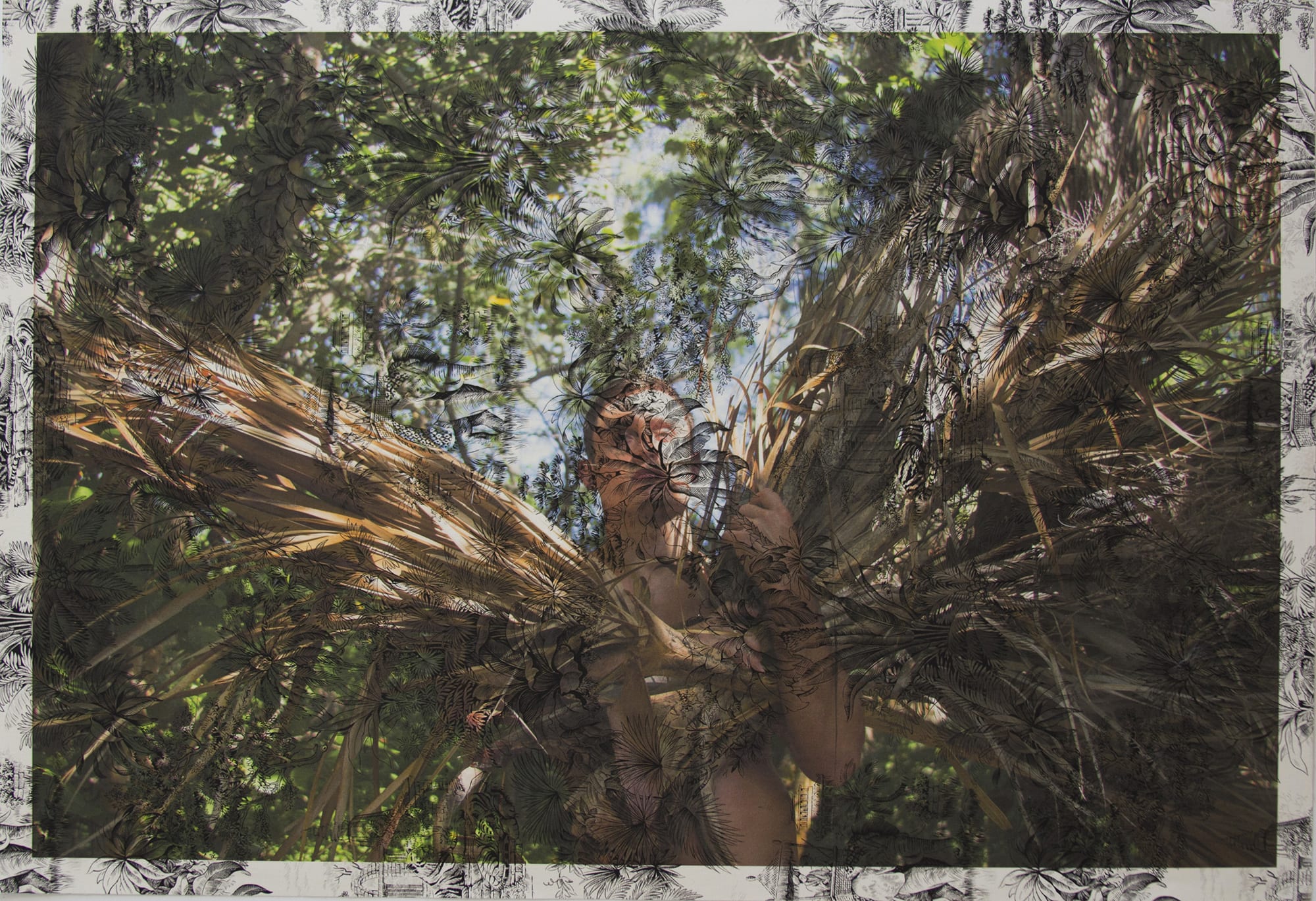
Traditionally, a photograph is printed and framed and the image itself becomes “the work.” In previous bodies of work (my photos re-photographed series, for instance) I made prints of my pre-existing images. Then I placed that print in a new environment and photographed the results, presenting my reimagined — and recontextualized — image as the final piece. That said, I am deeply opposed to digital manipulation, so I would never generate or greatly alter images in Photoshop (aside from making minor adjustments of brightness, contrast and saturation). I prefer to deal with photographic images in a purely physical rather than a technological manner.
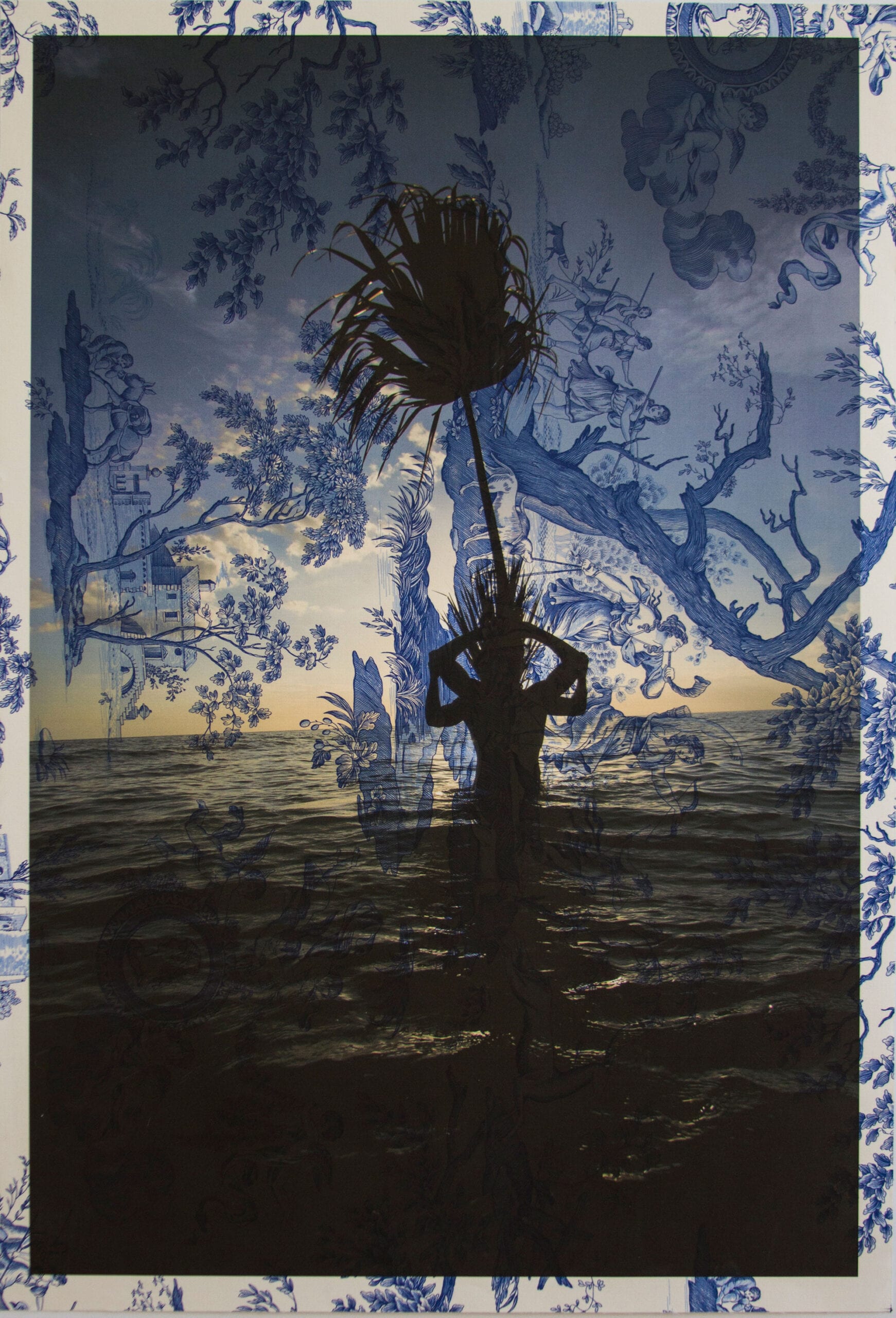
But in this latest body of work, I am more focused on exploring abstraction through my appropriation of imagery (found fabrics) as well as the element of chance involved with my signature printing process. Granted, in the beginning, I have a rough idea of how a piece will turn out, but the idea does not actually happen until I make the piece. I was inspired to pursue this direction after I was awarded a residency in Giverny — an opportunity to live and work in the legendary gardens and grounds of Claude Monet.

Before arriving, I consciously decided to immerse myself only in the process — I was not worried about achieving any specific “goals” per se. Initially, I was, of course, drawn to the idea of working outdoors in the extravagantly lavish garden. As it turned out, however, Normandy is quite a rainy place, which required me to spend much of my time inside. My bedroom was covered in a pastoral red and white toile de Jouy wallpaper. I often found myself contemplating the dated depictions of country life in France — and quickly became obsessed. Eventually, I decided to print some of my photographs directly onto a similar wallpaper I purchased. I liked the effect but wanted to push it further, so I bought some toile de Jouy fabric and began working with that instead.
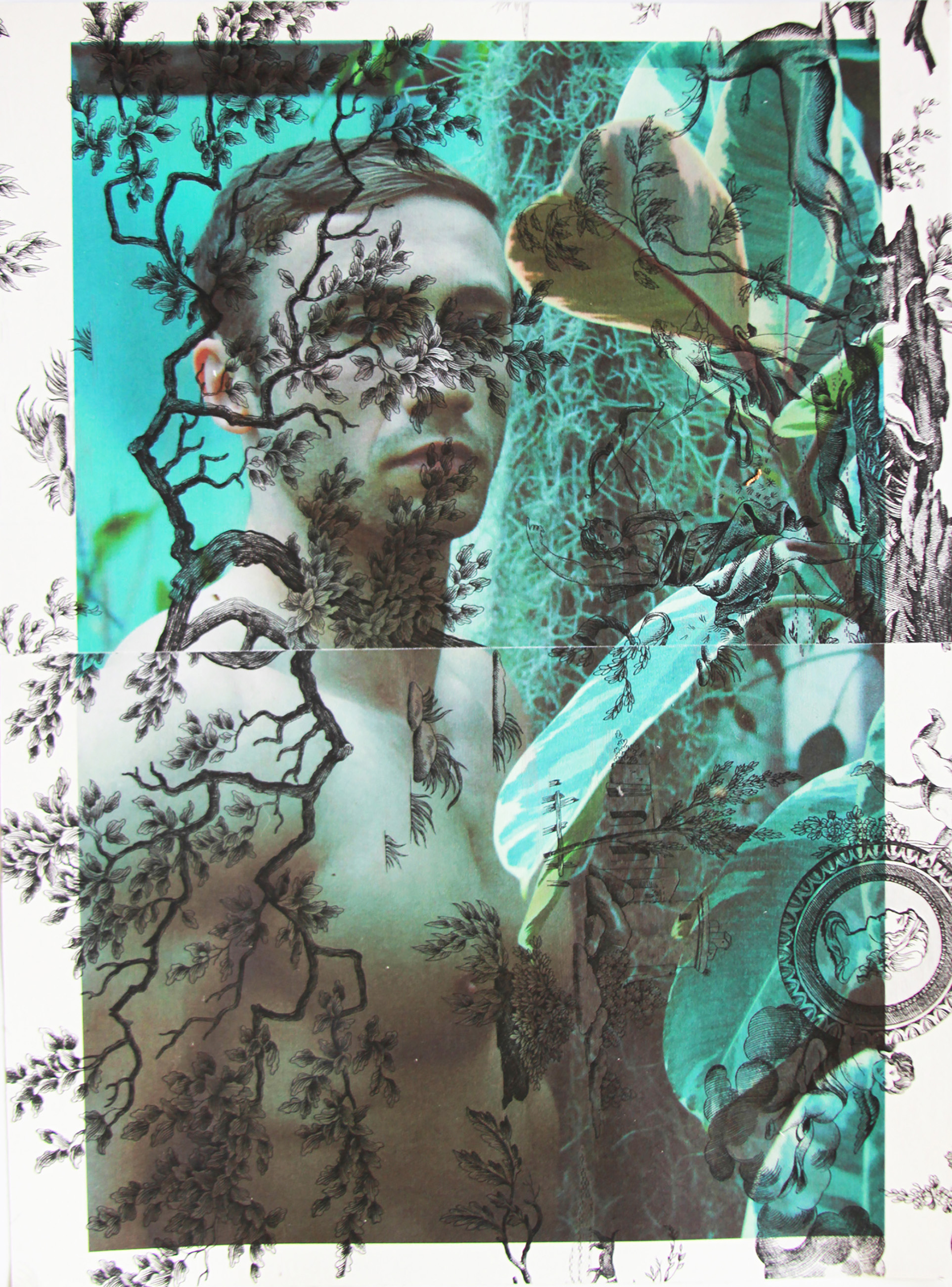
After a few failed attempts at bringing this vision to life, I came up with a way of feeding fabric directly into my Epson printer. The resulting effect reflected my ongoing fascination with themes of the interior world versus outside, real versus fake, light versus darkness as it relates to human nature, the notion of masculine and feminine representation, and the concept of camouflage. This led me to investigate further the intersection of idealized images of juxtaposing my photography against the picturesque realm depicted in the material, thus creating a new visual and conceptual realm. By day, I found myself haunting the fabric shops of Montmartre, which became my version of an art supply store.
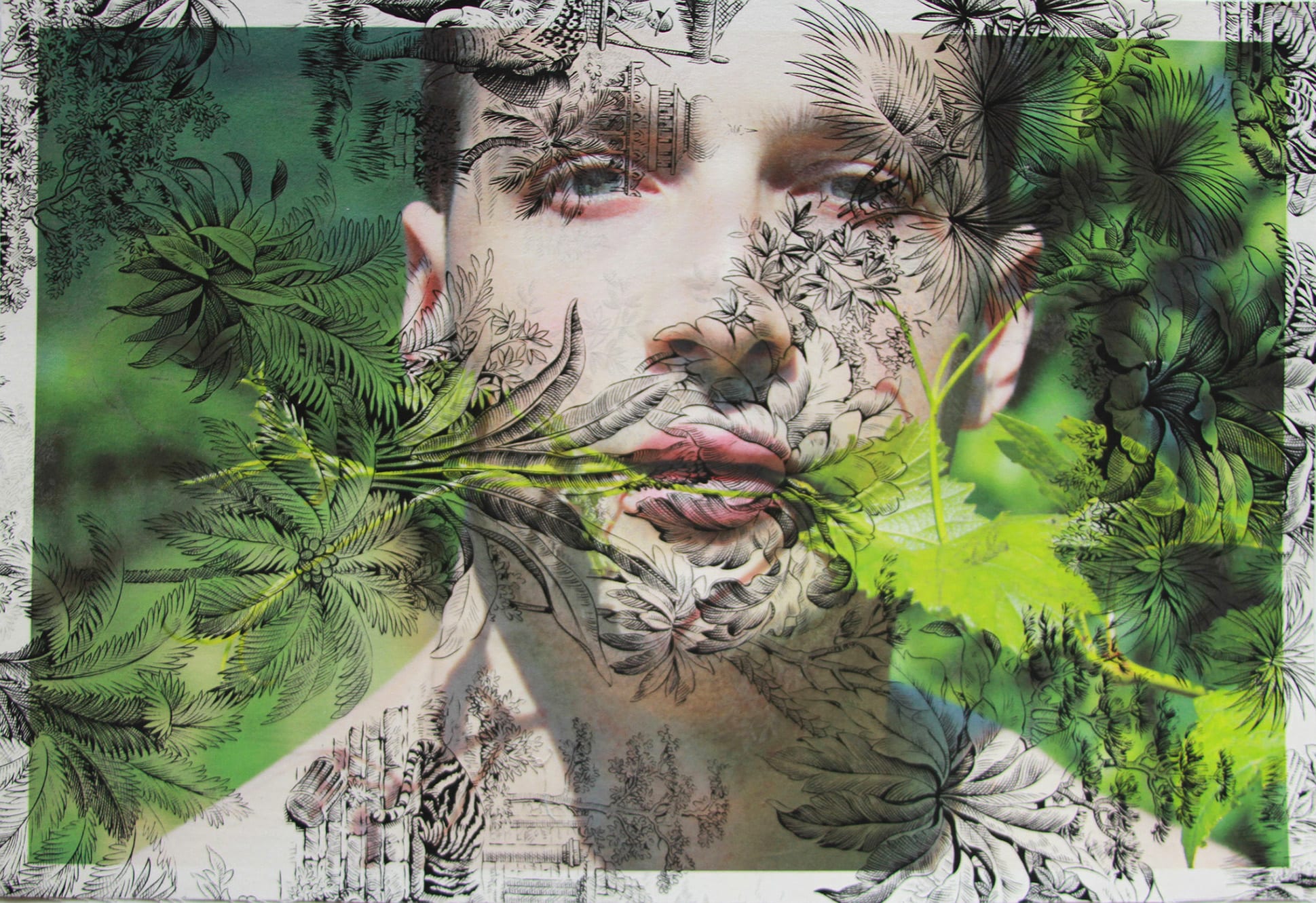
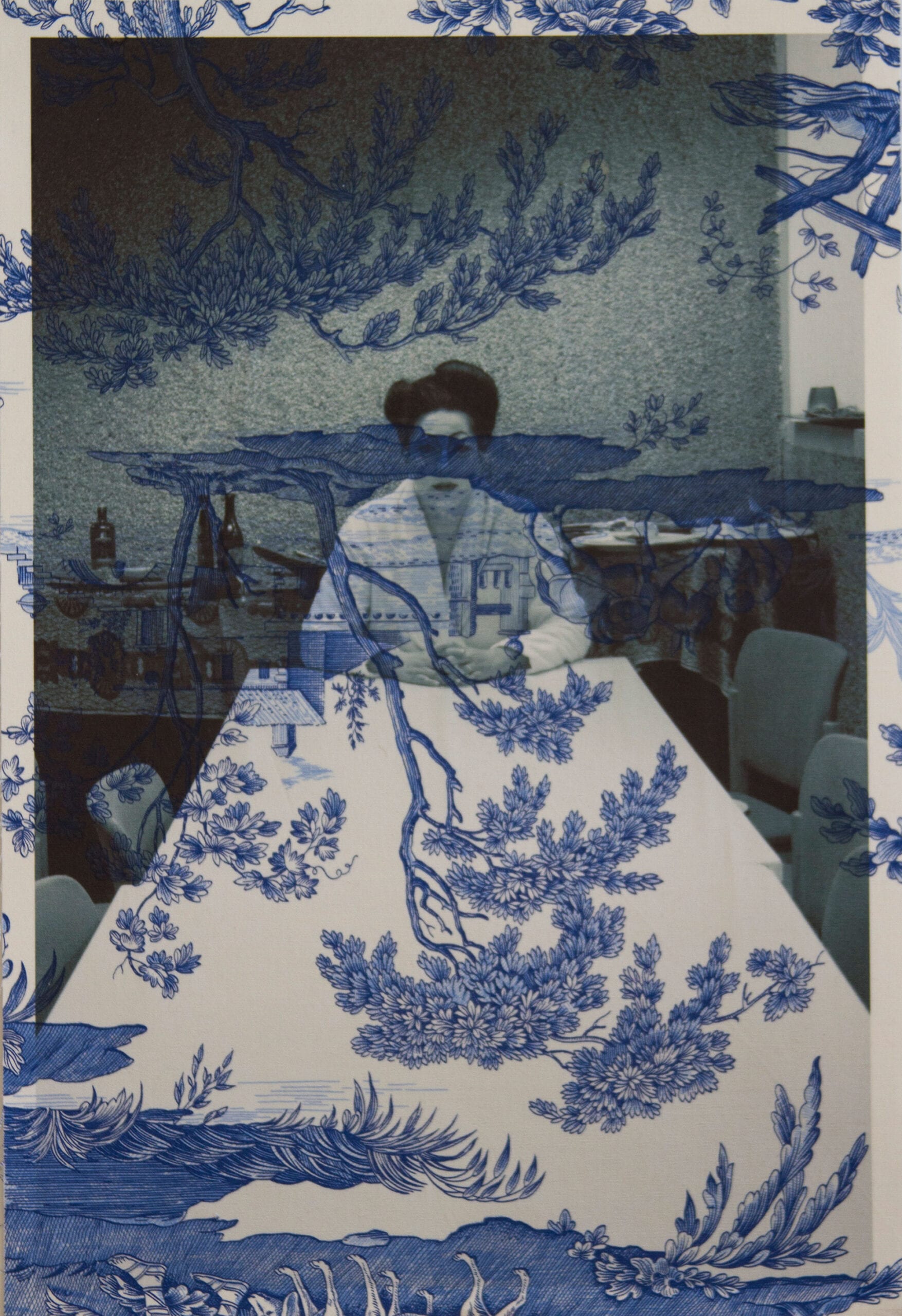
Later, in 2013, I had the good fortune of taking part in a residency at the Captiva Island home and studio of one of my longtime art heroes, Robert Rauschenberg. Here I had access to a large format printer, which enabled me to create much larger pieces than ever before. The scale and meaning of my photographic images in relation to that of the patterned toile backdrop shifted greatly — I realized that my work was, in a way, becoming more painterly. Ironically, I moved to NYC in 1983 to become a painter, and although that art form is no longer of interest to me, I feel that a certain painterly approach nonetheless resurfaces time to time in my work.
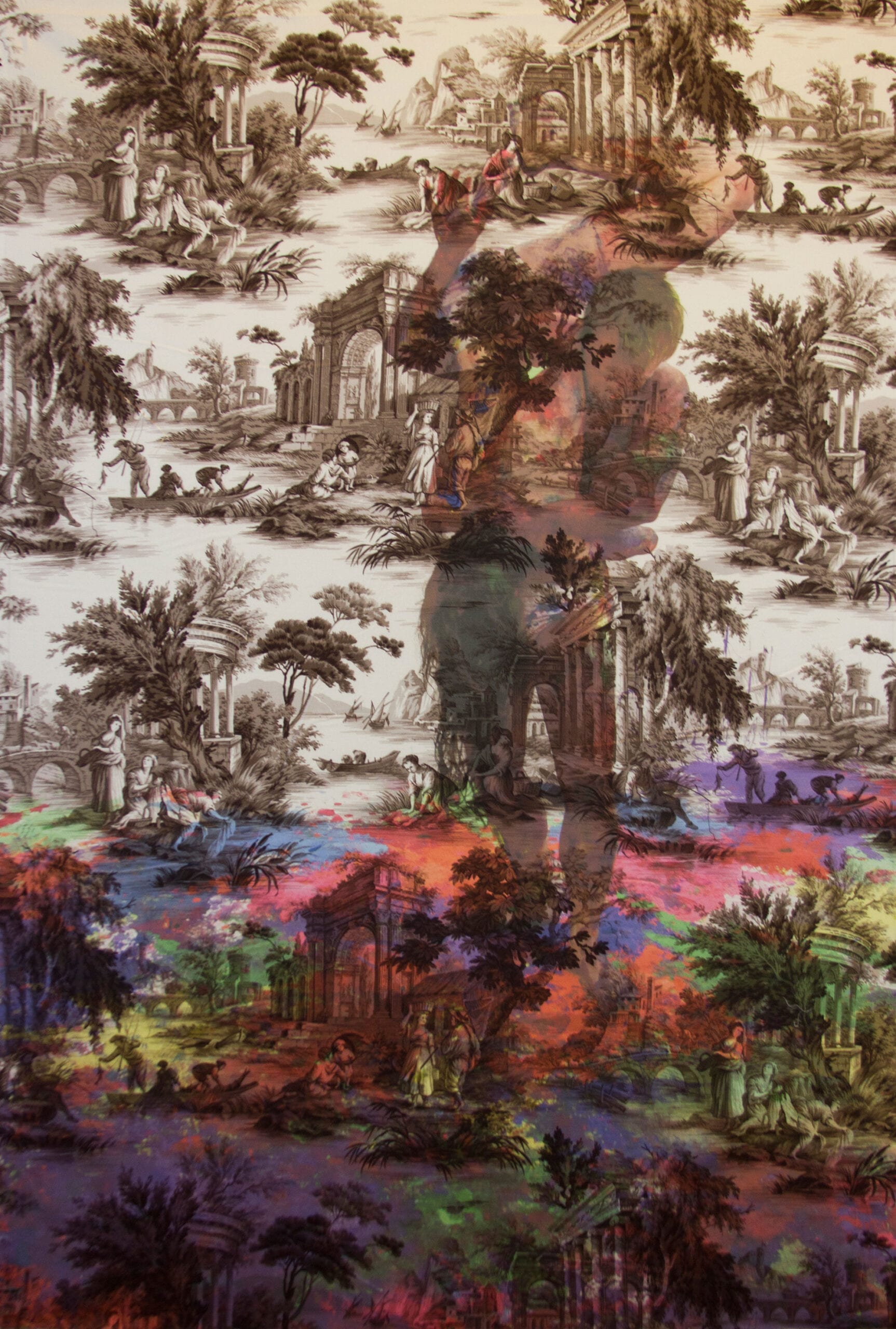
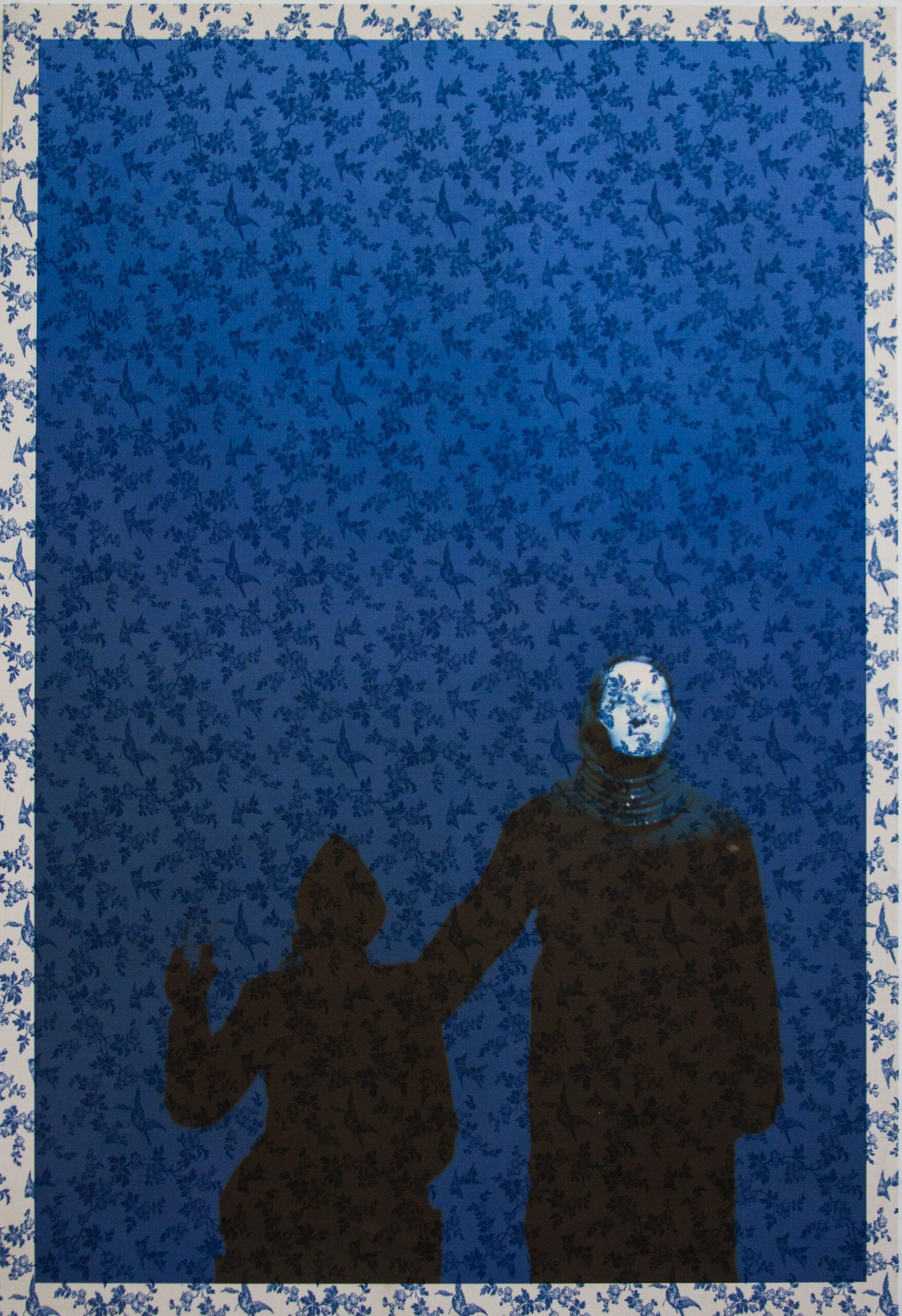
Upon returning to the US I also decided to embrace more “kitsch” fabric, “the suburban ugly” (as opposed to the French idealized), which was very American of me. I also utilized bleach to blur — to erase — parts of the material before printing on it, further distressing the fabric and allowing for greater abstraction. A show in December of 2013 entitled Be Here Now, at the Baldwin Gallery in Aspen, was the first exhibition of my toile de Jouy-influenced work. To be in the moment is what I strive for; I strive to be present in order to create works of value that will ideally resonate with the viewer. After all, that’s what a work of art does — it resonates throughout time with ideas and transcendent, timeless beauty.
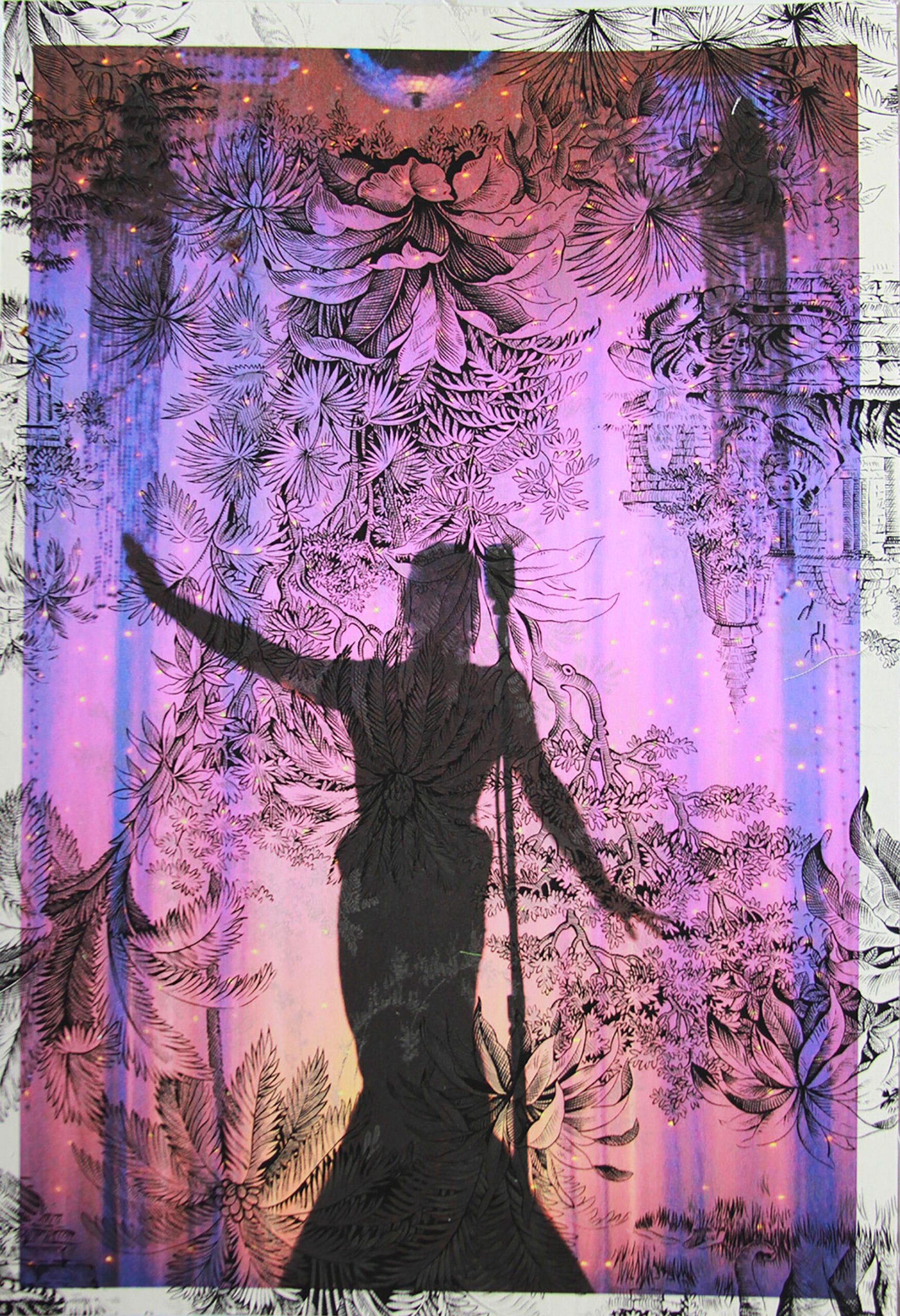

Featured image: Tim Hailand, Dan Vine face Vienna (on black tiger toile), digital pigment print on patterned toile de Jouy fabric, 13″ x 19″, unique print, 2012
All images © of the artist
